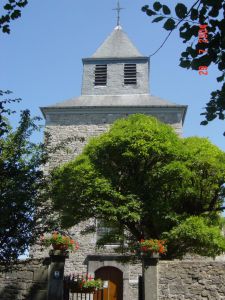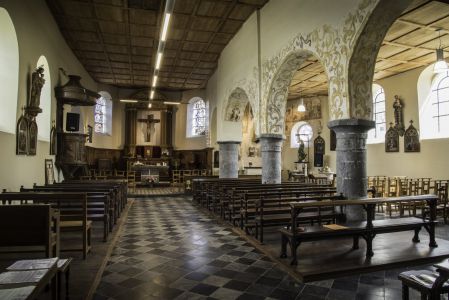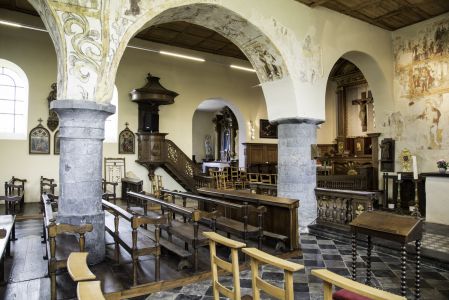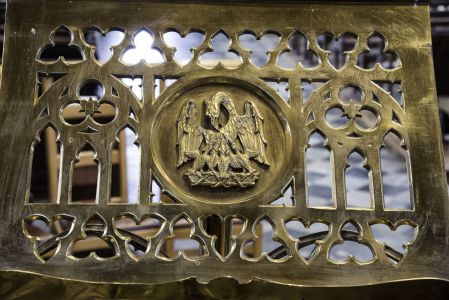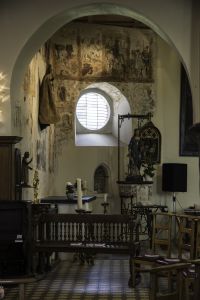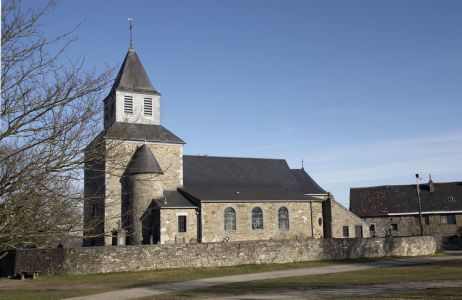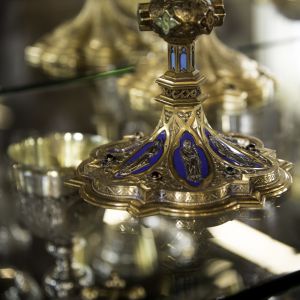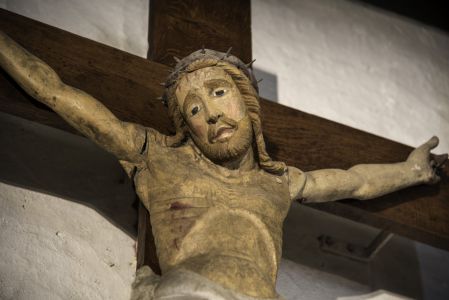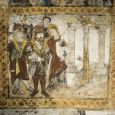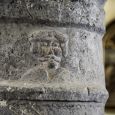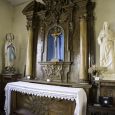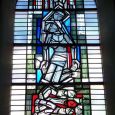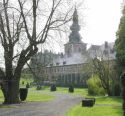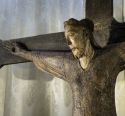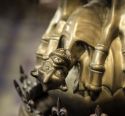Church | XIII-XVII | Romanesque | Catholic Church


Map
Opening hours
01 July - 31 August
Mon -
Tue -
Wed -
Thu -
Fri -
Sat -
Sun 14.00 - 18.00
Guided tour
Religious offices
Saturday evenings on the 2nd and 4th Sundays of the month: 17.00
See the updated timetable on the website of our partner Egliseinfo
Description
The oldest part of this beautiful church is Romanesque dating probably from the 11th century. It is a building with a single nave with the choir from 1684 to which a side chapel and a massive fortified tower, rebuilt in 1954, have been added.
The interior has been renovated well and contains a 14th-century polychrome Christ and several murals depicting the martyrdom of Saint Barbe from 1540-1560.
At the rear of this small country church, showcases exhibit the prehistoric finds in the region.The village History Group had no place to show them but visitors can admire them due to the collaboration with Saint Catherine's church.
Photos
Remarkable elements
Wall paintings
The mural paintings are from the 16th century. This is a real comic strip "avant la lettre". For the most part, they represent the martyrdom of Saint Barbara. Other paintings of the same make decorate the arches formed by the three pillars of the church. In her thesis (1979) Anne Dudant was able to date these masterpieces between 1540-1560. The paintings between the second and third columns are by another artist, perhaps by a local painter ? Maybe from a later date ? Attention should be drawn to the difference that exists between a painting applied to a painted underlayer and a fresco applied to a layer of lime.
This explains the great vulnerability to these works of art as well as their rarity.
Pillars
Two columns are surmounted by capitals with human figures, dated by IRPA in the 16th century. Oral tradition says they are older. Traces of polychrome paint. They alone would deserve a thorough study to date them with more certainty.
Polichrome Christ
Probably dating from the 14th century, this Christ was originally located at the front of the choir. It was placed in the main altar to replace a missing painting. The cross is recent.
Theotheque library
This arch-shaped stone tabernacle is said to have been dated from the period 1594-1640. It is decorated with floral motifs and is flanked on both sides by an angel.
Originally this theoteek was placed in the main altar. Fortunately it was secured and is now built into the tower next to tombstones with coats of arms.
Note: A tabernacle is used to store consecrated hostels. Usually this is built into the main altar or forms an independent object that is placed in the choir. Although also present in other neighbouring churches (Beaufays, Soiron) a theoteek is a rather rare architectural element.
Altar Louis XIII
This altar, dated 1645, had hidden the wall paintings since the second half of the 17th century. It was moved to the left transept (formerly the sacristy) after the fortuitous discovery of the wall paintings in 1947. With its interrupted pediment and acanthus leaves, we have a fine example of religious furniture from the first half of the 17th century in our regions. Note the presence of a coat of arms with a helmet (cavalry helmet emblematic of chivalry).
Stained-glass windows
The two stained-glass windows decorating the choir of the church were made by the artist-glazier Louis Jacvquemart (1916-1972). They are intended to preserve the memory of the two series of martyrs of Forêt: those of 5 and 6 August 1914, when 15 fellow villagers were slaughtered by the invaders, and those of 6 September 1944, when 60 members of the resistance were shot by the Germans in the courtyard of the castle of Forêt.



